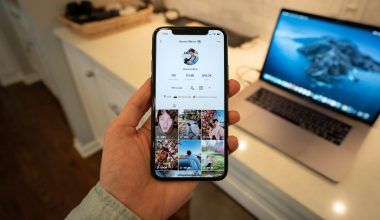For any artist, sharing music with the world is a dream come true. With the rise of streaming platforms like Spotify, Apple Music, and Amazon Music, it has become easier to reach a global audience. However, most platforms require a distributor to upload your tracks, and that can feel like a big hurdle, especially for independent artists. But here’s the good news – you can share your music on all streaming platforms without a distributor! In this guide, we’ll walk you through the process in simple, actionable steps.
Why Avoid a Distributor?
Distributors often take a cut from your revenue or charge upfront fees for their services. While they offer convenience, not every artist can afford these costs, especially in the early stages of their career. Additionally, going through a distributor can sometimes slow down the release process. By bypassing distributors, you gain full control over your music and keep 100% of your earnings. Isn’t that an exciting prospect?
Understanding Direct Upload Options
Many streaming platforms now allow independent artists to upload music directly. This means you can share your music on these platforms without needing a middleman. Let’s explore these options:
Spotify for Artists: Spotify has a feature for independent artists to upload their music directly. Although it’s still in beta, it shows promise for those who want to avoid distributors.
SoundCloud: SoundCloud is an excellent platform for sharing music without a distributor. It allows artists to reach fans directly and even offers monetization options.
YouTube: You can upload your music on YouTube and create a channel to connect with your audience. YouTube Music automatically lists your tracks if they’re uploaded to YouTube.
Bandcamp: This platform is perfect for artists who want to share and sell music directly to fans. It’s a great way to maintain creative control and build a loyal fanbase.
- Create High-Quality Tracks Before anything else, ensure your music is professionally recorded and mixed. The quality of your tracks can make or break your success on streaming platforms. Consider collaborating with skilled sound engineers or using reliable recording software.
- Format Your Music Correctly Streaming platforms often have specific requirements for audio files. Typically, they accept WAV files with a minimum resolution of 16-bit and a sample rate of 44.1 kHz. Double-check the requirements for each platform to avoid rejections.
- Design Engaging Artwork Your album or single cover is the first thing listeners see. Make sure it’s visually appealing and meets the resolution and size specifications of the platforms you’re targeting. Tools like Canva or Photoshop can help you create stunning artwork.
- Register Your Music Rights To protect your work and earn royalties, register your music with performing rights organizations (PROs) such as ASCAP, BMI, or PRS. This ensures you’re paid whenever your music is played publicly or streamed online.
- Upload Your Music Directly Once your tracks and artwork are ready, start uploading them to platforms that allow direct uploads. Follow their guidelines carefully and provide all necessary details, such as genre, release date, and song credits.
- Promote Your Music Promotion is key to getting your music noticed. Share your tracks on social media, collaborate with influencers, and engage with your audience regularly. Platforms like Instagram, TikTok, and Twitter can be powerful tools for music promotion.
The Challenges of Sharing Music Without a Distributor
While it’s liberating to avoid a distributor, it’s not without challenges. You’ll need to manage everything yourself, from metadata to rights management. Additionally, not all streaming platforms allow direct uploads, so you may need to skip some options or explore alternatives.
Alternatives to Direct Upload
If a streaming platform doesn’t allow direct uploads, consider these alternatives:
Utilize Aggregators: Some platforms offer aggregation services that are less expensive and more flexible than traditional distributors.
Leverage Free Tools: Websites like Amuse and RouteNote offer free distribution services with some limitations. They’re worth exploring if you’re on a tight budget.
Collaborate with Local Labels: If you’re unable to manage everything on your own, a local label might help you release your music on specific platforms without taking too much control.
Why It’s Worth the Effort
Taking the time to share your music on all streaming platforms without a distributor can be incredibly rewarding. You maintain complete ownership of your work and maximize your earnings. Plus, you gain invaluable insights into the music distribution process, which can help you grow as an artist.
Conclusion
Sharing your music on all streaming platforms without a distributor is entirely possible. By taking control of your releases, you’re not only saving money but also gaining a deeper understanding of the industry. Whether you’re just starting out or looking for ways to expand your reach, this approach empowers you to make your mark in the music world. So, take that leap and share your music with the world, your way!
For further reading, explore these related articles:
- Monetize Your Music on Gaana to Get Exposure
- Monetize Your Music on iTunes Without a Distributor
- Monetize Your Music on iTunes in India
For additional resources on music marketing and distribution, visit DMT RECORDS PRIVATE LIMITED.






